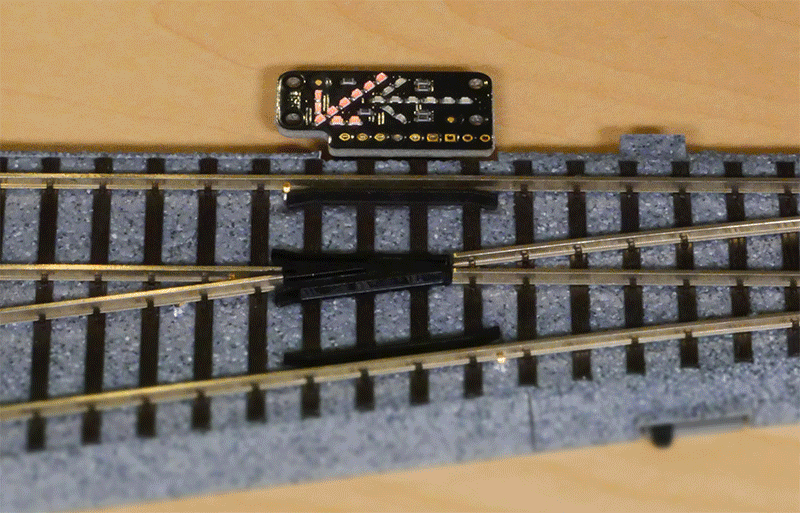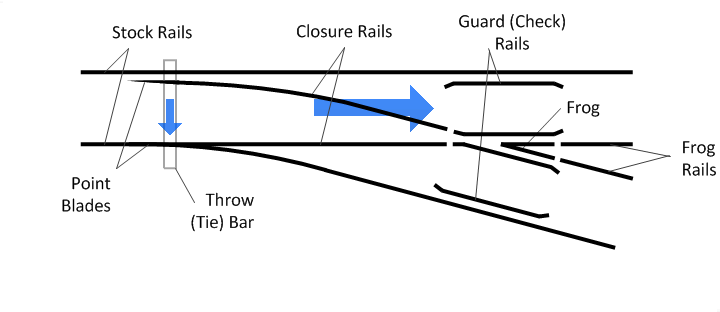Products




Updates
2/08/24 - Feel free to contact us at +1 689-333-4236 if you have any questions or concerns about our products.
12/27/23 - Save three dollars for each decoder plus signal you purchase as a kit.
12/26/23 - While developing our drop-in accessory decoders, we were troubled by how difficult it was to see if turnouts were thrown or closed. This led to the development of signal offerings for our HO decoders. These signals, in dwarf (DSL and DSR) and horizontal matrix arrow HSL and HSR) forms are now ready for sale. Please keep in mind that they are compatible with our H6L and H6R Kato HO #6 decoders and turnouts only. Kato made these turnouts with an opening allowing access to a 6-pin male header style connector, which Proto Design Labs has repurposed as a "Trackside Port.” Our dwarf and horizontal matrix arrow style signals plug into existing HO #6 turnouts, which have been modified with our H6 accessory decoders. You don't have to reopen the turnout or run wires to it for the signal function to work - just plug it into your modified turnout. And now you can "See Where Your Trains Are Going.”
5/10/23 - Proto Design Labs is pleased to announce our H6 decoders, available immediately! Like our N4 these are “drop-in accessory decoders” and are made to fit inside a Kato HO #6 turnouts. No messy wires spread across your layout for power and coil hookup to an external decoder board. Uniquely, H6 has a trackside connector for attaching turnout signals and local control switches.
2/17/23 - Check out our product mention in the March 2023 issue of Model Railroader magazine (pg. 13)!
1/28/23 - Check out our new video section! First video features the N4L Accessory Decoder Installation, Test and Address Change.
1/11/23 – We are not part constrained and have more than enough inventory to build to future demand. Availability of electronics parts is improving for many items.
1/10/23 - The names of our accessory decoders are meant to be informative.
-
N4L means N Scale, #4, left-hand turnout compatible accessory decoder
-
N4R means N Scale, #4, right-hand turnout compatible accessory decoder
-
H6L means HO Scale, #6, left-hand turnout compatible accessory decoder
-
H6R means HO Scale, #6, right-hand turnout compatible accessory decoder
About Us
Proto Design Labs is investing in model railroading with an intent to make digital products that simplify track infrastructure while modelers add detail and realism to their layouts. Self-contained turnout control is our first step in this journey. Turnouts can be problematic when planning a layout where decisions have to be made about manual versus remote control, DC vs DCC systemwide operation, decoder power and actuator wiring and relating remote switching to physical layout routing. We intend to address these issues with intelligently conceived controls and user interfaces where you are most likely to want them. Several products and extensions to products are far along as our design process works to deliver and evolve items for the marketplace.
In addition to our products, please accept our offering of track plans for N and HO scale for Kato Unitrack layouts. While the plans are from Kato, we decided to make the listings more user-friendly through sorting them by longest dimension and accounting for the number and size of turnouts, crossovers and power feed points. These metrics are intended to help you judge track plan feature complexity by size and turnout count. Enjoy!
Our Products
H6L and H6R accessory decoders are made to fit inside Kato HO #6 Unitrack® turnouts with integrated features and plug-n-play addons unlike any other accessory decoder on the market. These self-contained decoders give model railroaders the benefit of no external wiring while enjoying new capability like trackside connections for modular signals and local switch functions. What could be more complete for a roadbed-integrated accessory decoder! H6 continues the PDL tradition of getting DCC signals from inside specific turnouts they are designed for allowing clean, wiring-free operation in layouts whether permanent or temporary.
N4L and N4R accessory decoders are uniquely made to fit inside specific Kato N #4 Unitrack® turnouts in order to minimize the work required to install them. PDL spends extra time engineering these decoders to conform to available space, electrical connections and mechanical attach points for ease of installation. In this way, they perform a "disappearing act" whereby they carry out their function to listen for and respond to DCC commands on the rails while their presence is unknown. N4L and N4R make Kato N scale #4 turnouts ready for your "Digital Railroad" with minimal installation effort and maximum convenience of no external boards or wires to "complicate your layout presentation," whether temporary or permanent.
Below are photos of H6 and N4 turnouts before and after modification, prior to cover replacement. Once upgraded, the turnouts look identical to their unmodified appearance making them easy to un-snap and rearrange as you wish. Hidden inside, N4 decoders operate the turnout in response to your commands with no external wires. They are also designed to make #4 turnouts non-shorting on both frog-end entry points if you forget to align them!




Customer Comments
[N4L & N4R] "I am extremely happy with them. The installation was a snap and the video and printed documentation detailing the installation was spot on." - Bill P.
[N4L & N4R] "Watched your videos and read all the info included with the decoders and had all installed in less than 2 hours. Some of the time was getting the tools required at my work bench. They work great." - Ed B.
[N4L & N4R] "Have just received an N4L and N4R from you. So far have just installed the left hand. Love it! Most of my N scale is in T-Trak modules. Self contained track powered turnouts are so simple and effective." - Al B.
Videos
How To...
Set up Kato's #4 N Scale turnout (unmodified) to prevent shorting
In many layouts, a short occurs at turnouts when trains enter from the frog end where, of course, there are 2 paths. If you have a Kato #4 N scale turnout, there is a quick and easy solution.
Flip the turnout over and locate the 2 overlapping holes on the bottom cover of the #4 turnout. Together, they are marked "Frog Power". Then find the markings beside the overlapping holes which read "OFF" and "ON". Shorting will occur when the screw is in the "ON" position, so choose “OFF”. For more information on how the short occurs and other settings for this turnout, read on.
When you set the turnout's "Frog Power screw setting to ON, the internal switch energizes the frog with the correct polarity for one path through the turnout but creates the opportunity for a short through the other path.
Trains entering the point side of the turnout are guided to the correct path by the point rails. However, trains can enter the Frog end of the turnout through either the straight side or curved side. If the switch is not aligned for the path the train takes (by human error), you get a short.
This occurs when the engine's lead truck has a wheel of the front axle touching the frog and another wheel from the trailing axle (on the same side of the truck) touching the frog rail for that path. The assumption is that the wheels on each side of the truck pick up power and are connected electrically.
See the GIF diagram for turnout parts and naming conventions.
Whether you select "Power Routing" or "Non-Power Routing" for the corresponding settings of additional screws, 1. For "Curved Side" and, 2. for "Straight Side" is your choice according to if you want power to be passed to the direction of travel only or to both directions permanently. The latter setup is often chosen for DCC-enabled layouts. These 2 power routing settings will not cause shorting in either position.
Some layouts use "frog juicer" boards which detect the short and reverse frog power electronically. However, to justify the extra cost, you need to have an engine that requires an energized frog to make it through the turnout with a consistent electrical connection. I have yet to find one. Also keep your tracks clean so you can rule out dirt as a cause for intermittent running.
The approach taken with the Kato #4 described above "isolates" the frog so it doesn't have to choose a polarity and be wrong 50% of the time. If you never have a misaligned turnout when entering through either frog end path (curved or straight) then you should not have a short from the train passing over the frog unless it has derailed.















